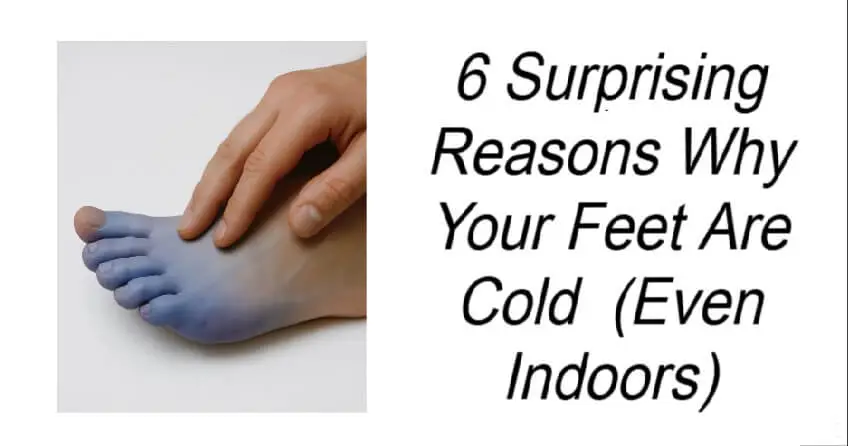6 Surprising Reasons Why Your Feet Are Cold (Even Indoors)
You’re tucked under a thick blanket, the heater’s on, yet your toes still feel like ice cubes. Sound familiar?
That chill creeping into your fingers or feet isn’t always just a quirk of the season. While it’s often harmless, sometimes it can be your body’s way of waving a red flag. So how do you know when to simply reach for another pair of socks—and when to pay closer attention?
Let’s explore the difference—and share some simple, soothing ways to warm up fast.
When Cold Extremities Are Totally Normal
Cold fingers and toes don’t always signal trouble. In many cases, they’re just your body doing its job.
When the temperature drops or you’re at rest for long periods, your body prioritizes vital organs like your heart and brain. That means reducing blood flow to the “less essential” zones—like your hands and feet. The result? Chilly toes and fingers. But once you’re up and moving or back in a warm space, circulation usually improves quickly.
6 Surprising Reasons Why
1. Lack of Sleep
Poor rest can slow your entire system—including your circulation—making your extremities more prone to feeling icy.
2. A Sedentary Lifestyle
Sitting for hours, whether at a desk or on the couch, limits blood flow to your lower limbs. Even a short walk or stretch can kick-start warmth.
3. Nutrient Deficiencies
Skipping meals or eating a restrictive diet can push your body into “energy-saving” mode. Guess which areas get cut off first? Yep—your hands and feet.
4. Stress
High levels of cortisol (the stress hormone) can constrict blood vessels. That’s why stress can literally leave you feeling cold—especially in your extremities.
5. Smoking
Tobacco damages and narrows blood vessels over time. Less flexibility means less effective response to cold, particularly in the feet.
6. Awkward Posture
Sitting cross-legged or leaning on an arm for too long can temporarily restrict circulation. Good news: shifting your position often helps right away.
When to See a Doctor About Cold Feet
While occasional cold toes are common, persistent chilliness or accompanying symptoms could point to an underlying issue. Watch for:
- Numbness or tingling
- Unusually pale or bluish skin
- Chronic fatigue
- Sores or wounds that heal slowly
Possible underlying conditions:
- Anemia – Reduced oxygen-carrying capacity in your blood
- Raynaud’s Syndrome – Blood vessels overreact to cold or stress, causing spasms
- Hypothyroidism – A slow metabolism can mean constant coldness
- Diabetes – Can damage small blood vessels and nerves, affecting temperature regulation
- Heart failure – Poor circulation from a weakened heart
If any of these sound familiar, it’s worth discussing with your healthcare provider.
Quick Ways to Warm Up Your Extremities
Need a fast fix? Try these simple but effective tips:
✅ Massage Your Feet or Hands
A gentle rub improves circulation and feels instantly comforting.
✅ Drink Something Warm
A hot cup of tea, coffee, or herbal infusion can raise your core temperature and get the blood flowing.
✅ Layer Smartly
Wool socks and fingerless gloves (even indoors!) can make a big difference without overheating the rest of you.
✅ Move More
Even five minutes of walking, stretching, or stair climbing can restore warmth to your limbs.
Final Thoughts
Cold feet aren’t always a cause for alarm—but they’re definitely a signal worth listening to. Whether it’s a reminder to stretch, manage stress, or check your health more closely, your toes are trying to tell you something.
So next time they feel like popsicles? Treat them to a little warmth—and a little attention.
You’ve just read, 6 Surprising Reasons Why Your Feet Are Cold. Why not read Manager Had To Hire A New Employee.

